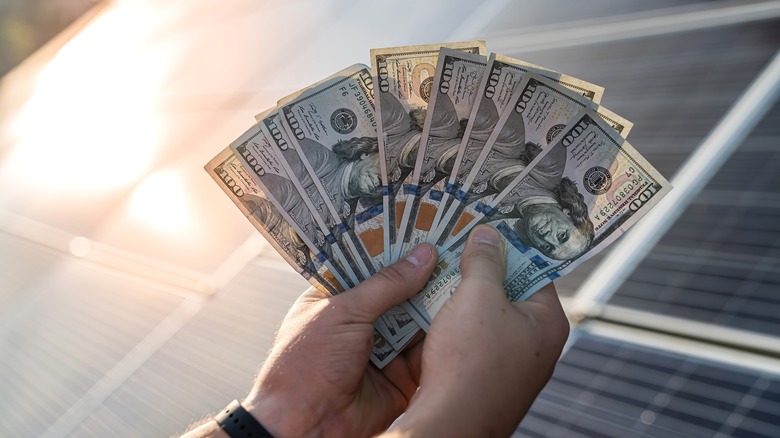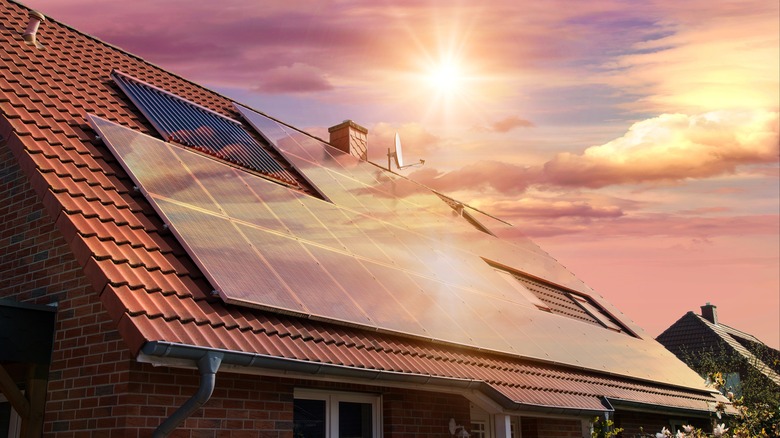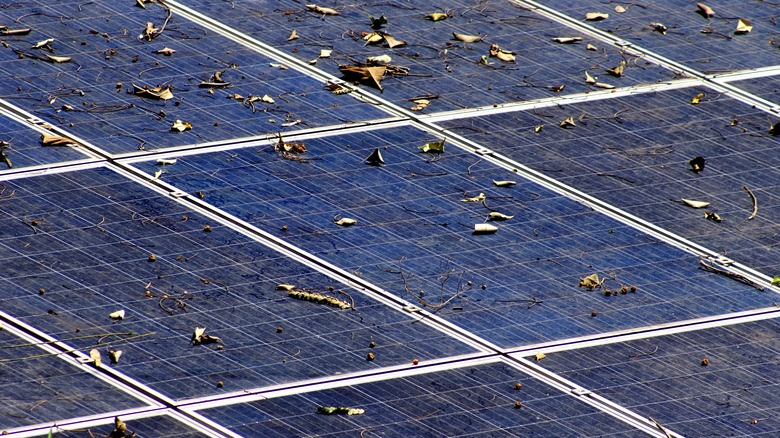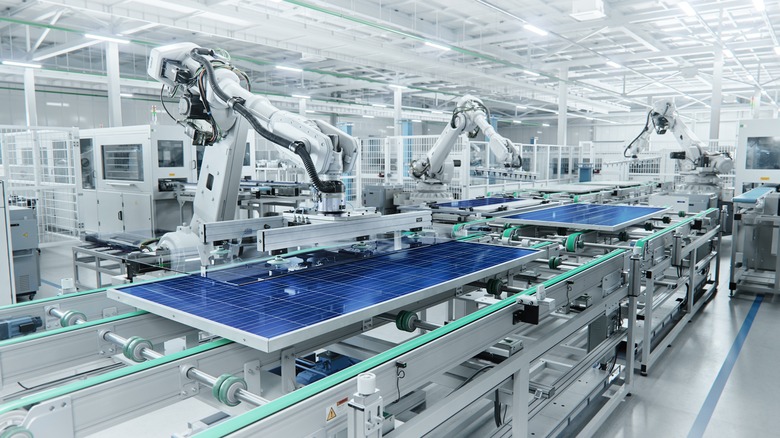The Hidden Costs Of Home Solar Panels That You Need To Know
Getting practically free, clean, green electricity and even claiming tax benefits from a one-time investment in a solar system is a sound idea on paper. Over the next 25 years (that's how long solar panels last on average), the system would supposedly pay for itself and net you a small profit. And with the falling prices, it's more affordable than ever to get home solar panels (via IERNA).
And because solar power is renewable, installing a solar system should reduce your carbon footprint — compared to coal and other fossil fuel sources powering the grid. These non-renewable sources are also subject to unpredictable price hikes for the fuel and the energy generated from it. Solar power insulates you against that market volatility.
With all that in mind, investing in a solar energy system seems like a no-brainer if you can afford it. But in reality, installing and maintaining the system is more subtle and involved than you might think. As is the cost incurred and pay-off of a solar investment.
Some costs might not jump out at you right away. But down the line, these are costs that you will bear. Here's a breakdown of the hidden costs you should consider before making your solar investment.
Buying and installing solar panels for your home
First, deciding how many solar panels you need seems like simple math — you find out the total energy consumption of your household and divide it by the total output of one panel. But the potential energy output from a solar panel isn't standard. The wattage rating of a solar panel is only one piece of the puzzle; you also have to bring the peak sunlight duration into the equation.
Multiply the daily peak sun hours for your area and multiply it with the rating to get the potential output in kilowatt-hours for the day (via Solar). Naturally, the peak sunlight hours vary significantly between states in the U.S. Some regions can get up to six peak solar hours, while others only receive three.
So a solar panel that can generate 2.7 kilowatt-hours in Arizona will only supply 1.5 kilowatt-hours in New Jersey (via Solar Reviews). To offset the fewer peak sunlight hours, you'll need to buy more panels.
Then there's the cost of installing the panels, which also varies between residencies and contractors. That said, U.S. residents can claim federal tax credits on the investment for buying and setting up solar systems (via Department of Energy).
Hotter climates, roof slope and direction, the landscaping around the panels (if they are ground-mounted), and nearby trees that cast shade (if they are roof-mounted) also affect the total output and, in turn, the total cost of a solar system (via Architectural Review).
Maintenance of home solar panels
On average, a solar power system can set you back upwards of $25,000. The cost of replacing solar panels is also eye-watering. So it's an investment you want to insure (via Clearway). Your home insurance may provide coverage by default. But the installation could drive up your home insurance premiums since it's at the risk of damage from the elements and severe weather.
Rooftop and ground-mounted systems are covered under different policies, so the hidden cost of insurance differs between companies (via Nationwide Insurance).
Maintenance of solar panels is also something you want to consider. Solar panels feature many silicon-based wafers (cells) that generate electricity but there's no motion involved, so the panels can last 25-30 years without extensive, regular maintenance. Nevertheless, they need some upkeep for the cells to run efficiently (via LASolarGroup).
The panels collect dust and debris over extended periods, diminishing their output. The rain will wash much of the dirt away, restoring the original solar cell efficiency. But a defective inverter or panel might be responsible if the system is consistently underperforming. Thankfully most manufacturers offer at least a 10-year warranty, so you can have a faulty panel replaced. You'll often have to foot the bill for shipping and installation, though (via SolarInsure).
Solar companies recommend a thorough cleaning and inspection once every year. Cleaning them yourself might void your warranty, and professional services charge hundreds of dollars. Robot solar panel cleaners do it for free, but they're not commercial (yet).
The environmental cost of solar power
The other hidden cost of solar panels is not monetary; it's environmental. Despite generating power from a renewable source, solar panels impact the environment. Breakthroughs in the industry have led to solar cells fashioned from carbon. But, primarily, they're still made from silicon and other rare elements. And it takes a lot of energy and toxic waste to extract and refine those elements, adding to emission costs (via 8BillionTrees).
Over their lifetime, the cells inside the solar panel degrade, operating at 30% less capacity towards the end. They aren't very efficient to begin with. After 25-30 years, your solar panels will most likely end up buried in a landfill — as will the toxic elements and expensive metals that go into producing them (via Architectural Review).
Older panels aren't typically reused because it's cheaper to buy newer ones. And their parts aren't resold because the cost of shipping and disassembling the panels outweigh the profit (via The Verge).
In theory and practice, solar panels can be recycled since the materials can be used to manufacture new panels. But recycling standards are the norm only in Europe. And according to projections, the cost of recycling might be too high in the next 25 years for feasible recovery of valuable materials (via Insead).



